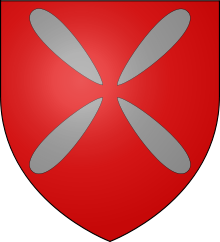- Comminges
-
The Comminges is an ancient region of southern France in the foothills of the Pyrenees, corresponding closely to the arrondissement of Saint-Gaudens in the department of Haute-Garonne. The region is normally associated with the former domain of the Counts of Comminges, although an alternate definition is based on the ancient diocese of Comminges which appeared to include more of what is now Spanish territory.
History
The earliest record is from Sidonius Apollinaris who wrote of the persecution suffered by the bishops of Comminges at the hands of the Arian Goths in the 5th century. The earliest known Bishop of Comminges is Suavis, who assisted at the Council of Agde in 506. The bishops of Comminges had their seat at Saint-Bertrand-de-Comminges.
The Comminges was originally part of Gascony. In 836 García I Galíndez, Count of Aragon, was made Viscount of Comminges and Viscount of Couserans. Around 940, Comminges was divided between the descendants of Aznar II, until reunited in 1012 under Bernard of Comminges. Over the next centuries, the size of the county varied, stretching to Toulouse at times.
The small, discontinuous province of Nébouzan was partly contained within the Comminges and its viscounts were vassals of the counts of Comminges.
Although the county became the property of the French crown in 1498, it retained its identity. With the reorganisation of the regions into departments in 1790, Comminges wanted to join its eastern neighbour, the county of Couserans, to form a department but this broke down over arguments about where the prefecture would be located. Eventually Couserans joined with the county of Foix, leaving the Comminges to be joined with the larger county of Toulouse to form the Haute-Garonne. At the same time the diocese of Comminges was abolished and replaced with a larger diocese aligned with the new department.
The region still identifies itself as the Comminges and Saint-Gaudens, its largest town, calls itself the "capital of the Comminges".
See also
Categories:- Medieval France
- Former provinces of France
- Haute-Garonne
- Hautes-Pyrénées
Wikimedia Foundation. 2010.



